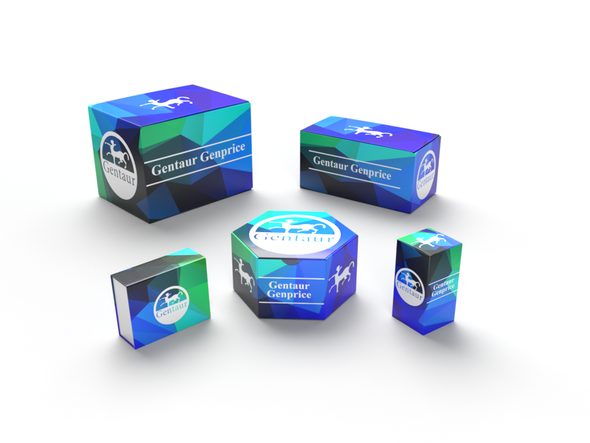Description
ORAI3 Antibody [2H2G9] | PM-4911 | Gentaur UK, US & Europe Distribution
Host: Mouse
Reactivity: Human, Rat
Homology: N/A
Immunogen: A 19 amino acid synthetic peptide from near the carboxy terminus of human ORAI3.
Research Area: Immunology
Tested Application: E, WB, IHC-P, IF
Application: ORAI3 antibody can be used for detection of ORAI3 by Western blot at 1 μg/mL. Antibody can also be used for immunohistochemistry starting at 2.5 μg/mL. For immunofluorescence start at 5 μg/mL.
Antibody validated: Western Blot in rat samples; Immunohistochemistry in rat samples and Immunofluorescence in human and rat samples. All other applications and species not yet tested.
Specificiy: N/A
Positive Control 1: Cat. No. 1466 - Rat Spleen Tissue Lysate
Positive Control 2: N/A
Positive Control 3: N/A
Positive Control 4: N/A
Positive Control 5: N/A
Positive Control 6: N/A
Molecular Weight: Predicted: 32 kDa
Observed: 32 kDa
Validation: N/A
Isoform: N/A
Purification: ORAI3 Monoclonal Antibody is immunoaffinity chromotography purified IgG.
Clonality: Monoclonal
Clone: 2H2G9
Isotype: IgG2a
Conjugate: Unconjugated
Physical State: Liquid
Buffer: ORAI3 Monoclonal Antibody is supplied in PBS containing 0.02% sodium azide.
Concentration: 1 mg/mL
Storage Condition: ORAI3 monoclonal antibody can be stored at -20˚C, stable for one year.
Alternate Name: ORAI3 Antibody [2H2G9] : TMEM142C
User Note: Optimal dilutions for each application to be determined by the researcher.
BACKGROUND: ORAI3 Monoclonal Antibody: Antigen stimulation of immune cells triggers Ca++ entry t hrough Ca++ release-activated Ca++ (CRAC) channels. ORAI3 is one of two mammalian homologs to ORAI1, a recently identified four-transmembrane spanning protein that is an essential component of CRAC. All three homologs have been shown to function as Ca++ plasma membrane channels gated through interactions with STIM1, the store-activated endoplasmic reticulum Ca++ sensor. However, ORAI3 channels failed to produce detectable Ca++ selective currents in cells co-transfected with ORAI3 and STIM1, indicating that ORAI3 channels undergo a lesser degree of depotentiation than ORAI1 or ORAI2. Na+ currents through ORAI1, 2 and 3 channels were equally inhibited by extracellular Ca++, indicating that each have similar affinities for Ca++ within the selectivity filter. This antibody is predicted to have no cross-reactivity to ORAI1 or ORAI2. Larger molecular weight bands are sometimes seen in SDS-PAGE; these may represent post-translationally modified ORAI 3.

![ORAI3 Antibody [2H2G9] ORAI3 Antibody [2H2G9]](https://cdn11.bigcommerce.com/s-1rdwiq712m/images/stencil/608x608/products/460842/466671/gentaur-genprice__26005.1661610467__29809.1661628092__75433.1661676199__77988.1661684280__64362.1661692443__02085.1662049603__45075.1662119302__91744.1662191540__21580.1662291419__00329.1663494784.png?c=1)
![ORAI3 Antibody [1B4F1] ORAI3 Antibody [1B4F1]](https://cdn11.bigcommerce.com/s-1rdwiq712m/images/stencil/590x590/products/460843/466672/gentaur-genprice__26005.1661610467__29809.1661628092__75433.1661676199__77988.1661684280__64362.1661692443__02085.1662049603__45075.1662119302__91744.1662191540__21580.1662291419__07816.1663494784.png?c=1)



